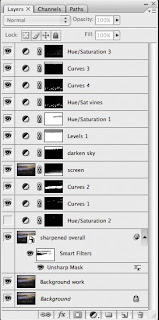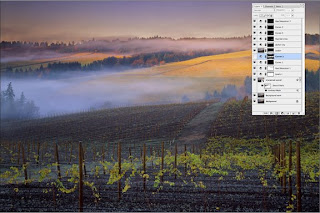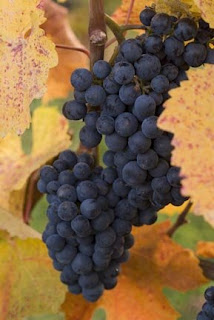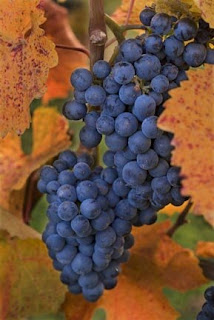
Finally, after driving all over Oregon to interview and photograph wine/vineyard people, editing 3000 photographs down to the 150 that ended up in the book, choosing quotes from 200 hours of conversations, weaving those into a narrative text and then struggling with the designer,
Oregon: The Taste of Wine book finally hit the bookshelves today.
It's out there for all to see. The Graphic Arts Publishing staff hopes it will turn a profit so that they can feed their kids, get married or take vacations. For me, as the creator, it's much more personal. It's a little like a son or daughter growing up and going out on their own. I did the very best I could as a parent. Then he/she/it takes on a life of its own.
But how do I know my book child is any good?
After the dust of initial excitement settled, something inside says that it reached the mark I set for myself.
The photography: After years of self doubting myself, I'm finally confident with my photography. After all, my early boot-camp training came with organizations like National Geographic. While I didn't have time to do all of the creative things I imagined, I'm absolutely confident the photography in this book is strong.
The text: I knew my limitations. I wasn't an Oregon wine expert. And I didn't want it to be a history of Oregon wine. So I went to the experts, the Oregon winemakers, winery owners and vineyard managers. I also know how to be real with people. I wanted the book to be about people and be very personal. So, when about 3/4 of the way through my very first interview, Dick Ponzi said, "You know I telling you things I haven't shared before," I knew we were on the right track. David Lett had a honest conversation with his son Jason they never had before while I was recording. Jason asked for a copy of the interview as a memory after his father recently died. Even thought I had to leave lots of great quotes on the table, the narrative is strong.
It also helps when people like Brian Bushlach, co-host of KXL's Vine Time radio show wrote: "My friend, it is a spectacular work of art, both visually and in the literary sense! You captured the soul of the Oregon wine industry, like I’ve never seen it, nor experienced it. I’ve never been so in love with book about wine."
So on a personal level, I feel very good about this book child. For that I need to thank the One who created all the light and owns my every thought and breath. I hope the book can bring joy, adventure and maybe a bit of inspiration to readers.
 At one time I lived in the drawing and painting art world. (I even ended up with a Master's Degree in Fine Art.) During that Painting Period of my life and now with photography, I noticed that after a very successful painting or gallery show, some artists (myself included) would fear to continue. A chilly inner voice whispered: "How can I do anything that good again?" So it was safer to continue using the same "successful" technique. For me that meant death to strong new work.
At one time I lived in the drawing and painting art world. (I even ended up with a Master's Degree in Fine Art.) During that Painting Period of my life and now with photography, I noticed that after a very successful painting or gallery show, some artists (myself included) would fear to continue. A chilly inner voice whispered: "How can I do anything that good again?" So it was safer to continue using the same "successful" technique. For me that meant death to strong new work.


















































